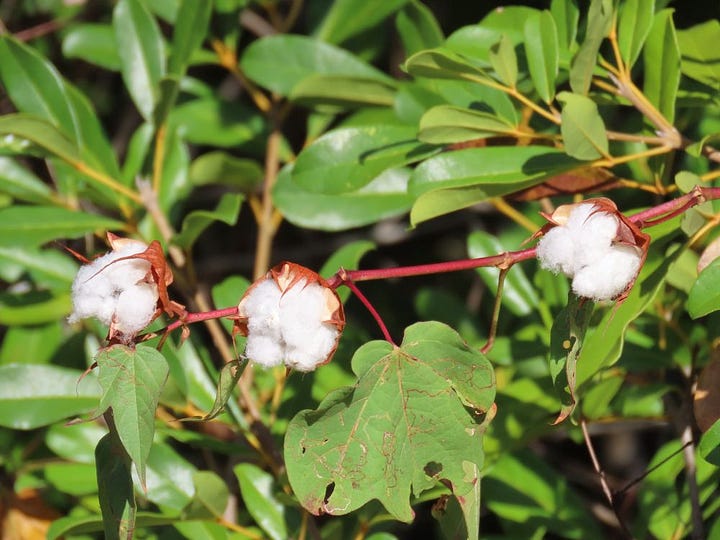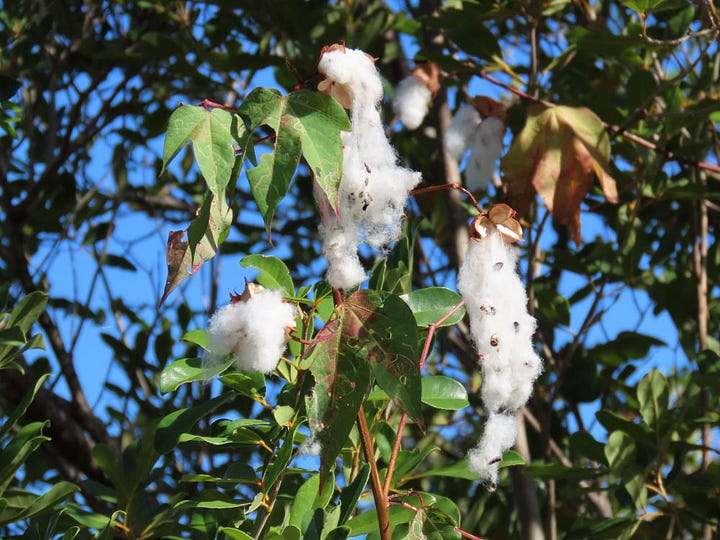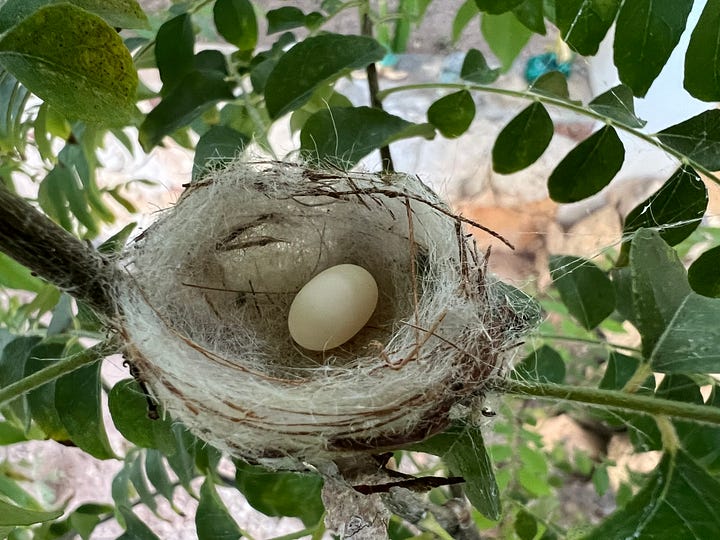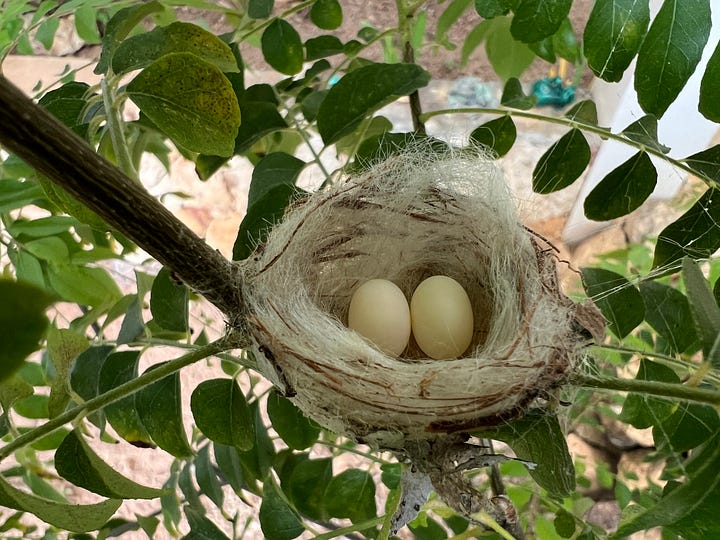This week, our resident Antillean Crested Hummingbird continued to build her nest in the Curry Leaf plant. Days four and five were quite busy, but the work became slower on days six and seven.
After the last episode, a subscriber asked if I provided nest materials for the bird. I do not furnish any form of nest material beyond the native plants in my yard. When I built my house, I decided to keep as many native plants as possible. The one exception is the gift of two local cotton plants I added to the yard three years ago. They are mature and provide nest material for a variety of species.
While I didn’t record it in my videos, this bird gathered fibers from many plants in the yard. Cotton was placed as a liner in the nest in the final days of nest building. The placement of cotton is seen in today’s video.
On a humorous note, she kept stealing nest materials from a nearby Lesser Antillean Bullfinch nest under construction in one of my orchid boxes. There was a lot of cackling from the Bullfinches. Eventually, they abandoned the nest and let her take what she wanted, proving that size is not always the determining factor in life.


One of my go-to books on Caribbean nesting birds is Les Oiseaux Des Antilles et leur nid Petiti et Grandes Antilles. I purchased the book in Guadeloupe many years ago. It is written entirely in French. Fortunately, their website is in English. I have linked the site below.
A quick summary of reproduction for this species is provided here:
“REPRODUCTION:
Antillean Crested Hummingbird breeds all year round, with a peak between March and June. The female selects the nest-site and builds the nest. It is a small cup situated in a shrub or in vine, on thin branch, at about one to three metres above the ground and among foliage. This tiny cup is decorated outside with dead leaves, fine chips of bark and lichens. The interior is lined with soft plant fibres.Female usually lays two eggs. Incubation lasts about 17 to 19 days, by female alone.
Chicks have dark grey down on back at hatching. They are fed by female and they remain at nest 19 to 21 days.After leaving the nest, young remain for about 3 to 4 weeks more with their mother. They reach their sexual maturity through their second year. This species produces only one brood per season.”


The first egg was laid on day eight (April 6, 2025). The second egg arrived on day ten (April 8, 2025). Based on these dates, the earliest hatch date should be April 23, 2025.
This video provides a window into the nesting process over the last week. We should all be impressed as this little bird handles the weather.
I will monitor the incubation process over the coming weeks. So stay tuned for the latest developments!






Jackie this is so special. Thank you for sharing.
This is lovely. Hummingbird nests are perfection, aren’t they! We have our endemic Red-billed Streamertail and also Vervain hummingbirds in our yard in Kingston.